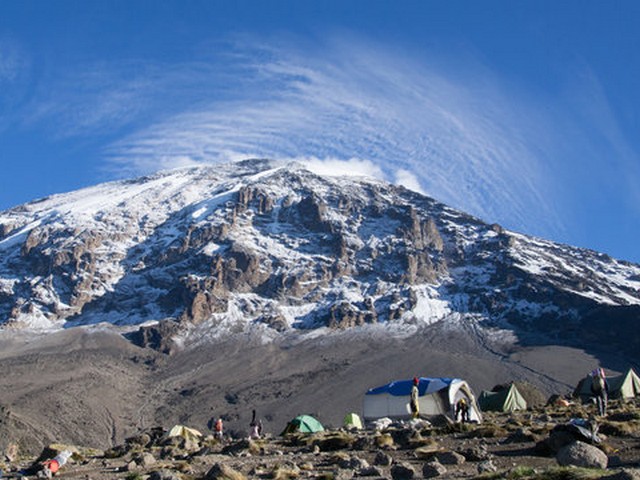How To Avoid Altitude Sickness On Kilimanjaro Climbs
Welcome to the soaring heights of Mount Kilimanjaro, where the air is crisp, the landscapes are breathtaking, and the adventures are limitless. At Kilimanjaro Centre for Trekking and Ecotourism (KCTE), we not only dream of taking you to the roof of Africa but ensuring your journey is as exhilarating as it is safe. One of the paramount concerns climbers face is altitude sickness, a condition that can dampen the spirit of adventure. But fear not! With proper guidance and preparation, you can minimize the risks and enjoy a memorable climb. This blog post aims to equip you with essential strategies to prevent altitude sickness on your Kilimanjaro climb, ensuring your trek is nothing short of spectacular.
Understanding Altitude Sickness
Altitude sickness, or Acute Mountain Sickness (AMS), occurs when you cannot get enough oxygen from the air at high altitudes. As you ascend the mighty Kilimanjaro, the decrease in atmospheric pressure makes breathing difficult. Symptoms can range from headaches and dizziness to more severe forms like High Altitude Pulmonary Edema (HAPE) and High Altitude Cerebral Edema (HACE).
Why It's a Concern on Kilimanjaro
Kilimanjaro's peak, Uhuru Peak, stands proudly at about 5,895 meters (19,341 feet) above sea level. Climbing to such heights exposes you to the risk of AMS if the ascent is too rapid. Since every climber's ability to acclimatize varies, understanding and preparing for altitude sickness is crucial for all.
Planning Your Climb with KCTE
1. Choose the Right Route
Choosing the right route can significantly affect your acclimatization process. At KCTE, we recommend routes that provide ample time to adjust to the altitude, such as the Lemosho or the Machame route. These options offer a gradual ascent and better opportunities for "climb high, sleep low," a tried and tested method to prevent altitude sickness.
2. Pre-Climb Preparation
Preparation is key. Start training several months before your climb. Cardiovascular workouts, hiking, and high-altitude treks can help your body adapt to lower oxygen levels. Additionally, discuss with your doctor about the benefits of Acetazolamide, a medication that can aid acclimatization.
During the Climb
3. Pace Yourself
“Pole Pole” (slowly, slowly in Swahili) is the mantra on Kilimanjaro. Maintaining a slow, steady pace helps your body adapt to the altitude. Overexertion can accelerate the onset of symptoms.
4. Stay Hydrated
Dehydration is a known contributor to AMS. Drink at least 3-4 liters of water daily during the climb. Our guides at KCTE are always equipped with ample water and are diligent about encouraging climbers to stay hydrated.
5. Eat Well
Your appetite might decrease as you ascend, but maintaining energy intake is vital. Our expertly designed meals are high in carbohydrates and easy to digest, providing you with the necessary energy without taxing your digestive system.
6. Listen to Your Body
Recognize the symptoms of altitude sickness, which can include headache, nausea, dizziness, and fatigue. Inform your guide immediately if symptoms appear. KCTE's guides are trained in first aid and altitude sickness management and can make critical decisions, including delaying your ascent or initiating your descent if necessary.
Post-Climb Recovery
After summiting Kilimanjaro, give your body time to recuperate. Continue hydrating and take it easy for a few days. Reflecting on your journey mentally and physically helps in recovery.
Why Book Your Climb with KCTE?
At Kilimanjaro Centre for Trekking and Ecotourism, we pride ourselves not just on our climbing expertise but also on our commitment to your health and safety. Our tailored itineraries, seasoned guides, and emphasis on a gradual ascent make us the best choice for your Kilimanjaro adventure.
Climbing Kilimanjaro with Confidence
Climbing Kilimanjaro is an awe-inspiring experience. With the right preparation and the expertise of KCTE, you can tackle this giant with the utmost confidence, knowing that you are in safe, knowledgeable hands. Ready to conquer Kilimanjaro and create unforgettable memories while keeping altitude sickness at bay? Book your climb with Kilimanjaro Centre for Trekking and Ecotourism today!
FAQ
Q1: How long does it take to climb Kilimanjaro?
A1: The duration depends on the chosen route, but typically it ranges from 5 to 9 days.
Q2: Is it mandatory to have a guide to climb Kilimanjaro?
A2: Yes, it's mandatory. KCTE provides experienced guides to ensure your safety and enhance your climbing experience.
Q3: What is the best time of year to climb Kilimanjaro?
A3: The best times are during the dry seasons, from late June to October and from late December to March.
Q4: Can children climb Kilimanjaro?
A4: Yes, children from the age of 10 are allowed to climb Kilimanjaro, provided they are well-prepared and accompanied by an adult.
Q5: What should I pack for my Kilimanjaro climb?
A5: Essential items include appropriate clothing for varying temperatures, a sleeping bag rated for sub-zero temperatures, hiking boots, a hydration system, sunscreen, and a camera for those breathtaking views!
Climbing Kilimanjaro is more than just a trek; it's an expedition of the mind, body, and spirit. At KCTE, we ensure you step onto the trails prepared and return with tales of triumph. Join us to touch the sky—where the land stretches below, and your spirit flies above the clouds.




